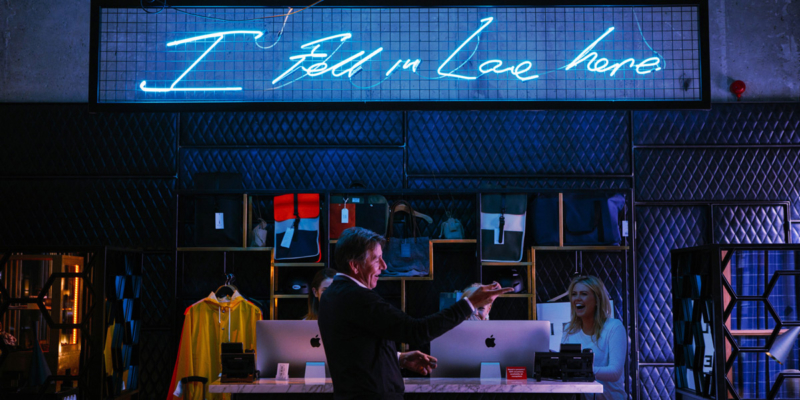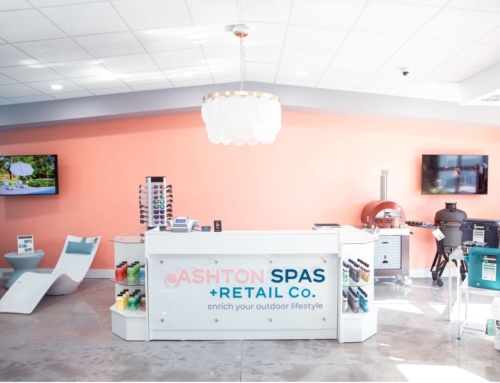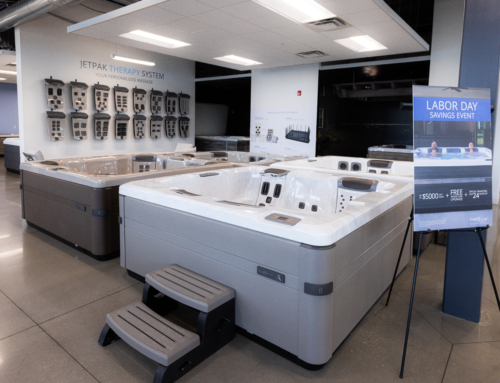Business success in the world today is all about putting the customer first. Google the phrase “customer-first culture” and you’ll get over 450 million results. Among those results are articles on the importance of “customer experience,” advice for creating a “customer-centric” marketing strategy, and information on developing a “customer-obsessed” culture. While all of these are good ideas, they are often built on a false foundation.
Most businesses approach the idea of a customer-first culture by thinking about how it can make their stores more profitable. These businesses may think they are putting the customer first, but in reality, they have a sales-driven culture where the priority is making the sale. You should instead build a customer-first culture on a foundation of meeting customer needs, and every employee’s goal is to build and deliver an exceptional customer experience.
When the Customer Comes First, the Customer Will Last
A true customer-first culture is a team-sport that involves the participation of everyone in the organization from the CEO to the store manager to the salespeople to the cashiers and even the janitorial staff. To create a successful customer-first culture, everyone from the top down must actively participate, which requires knowledge and training.
Know Your Customers
Customer-first cultures begin with a strong knowledge of what your customers want and need. Analytics is an important part of gaining this knowledge. However, analytics need to go beyond finance, sales, investment and supply chain reporting. Retailers also need to:
- Track customer behavior online and in the store.
- Identify the customer characteristics you need to use for personalized product offerings.
- Know what your customers are saying on social networks.
- Establish factors for identifying anonymous online shoppers.
Strong customer knowledge allows you to center on the customer instead of on the task of selling, earning a big commission, or exceeding last quarters numbers.
Train Your Staff
Creating a customer-first culture means teaching your staff how to put the customer first at all times. Whether it’s a new hire or an old pro, take time to train them on how to offer customer-first service. This could include everything from product knowledge to how to listen well and respond appropriately to customer needs.
When a customer asks, ‘What’s the difference between X and Y?’ your employee should have an answer.
Make sure all your employees understand your customer-first approach and are ready to implement it when they hit the sales floor. RetailDoc suggests these five practices for bringing a customer-first focus to retail stores:
- Provide retail sales training
- Connect employee performance to their pay
- Pay a bonus for exceeding goals
- Give product knowledge training on your top 25 items
- Give written warnings if employees are not performing.
You must train your employees on HOW to establish a customer-first culture. Especially the front-line sales and service staff with the first and most contact with consumers. One way to do this is by providing the tools for salespeople to actually help customers rather than having them just push products. Tech that allows staff to access inventory, find products in the store, and take payment from the sales floor are great ways to put the customer’s needs first.
Bob Phibbs, a retail consultant based in New York emphasizes that “meeting and greeting people is the foremost way to illustrate a customer-first” culture. He suggests that employees “get out from behind the sales counter and engage with customers.” John Tschohl, President of Service Quality Institute in Minneapolis, stresses the importance of educating employees on everything about your merchandise. “When a customer asks, ‘What’s the difference between X and Y?’ your employee should have an answer,” Tschohl says.
Knowing your products allows you to put the customer’s need first by being able to answer their questions quickly and intelligently. If you can’t, those customers will go to a store with employees that can.
Rethink Your Store Layout
Take a deep breath because this might be a hard pill to swallow. Instead of arranging your store by category, arrange it according to customer job. What is customer job? It’s the customer’s reason for coming into your store. Why are they there? Are they interested in purchasing a spa, are they stocking up on filters, chemicals, or water testing supplies? Arranging your store by customer job rather than category makes it more convenient for the customer by allowing them to complete their tasks more efficiently.
A customer-first culture means you give the same attention to the person buying a $20 bottle of spa chemicals that you give to the couple buying a $20,000 spa with all the bells and whistles.
For instance, design your layout so that repeat purchase items are near are in one designated area of the store. What about encouraging browsing of other products? Let this happen naturally. It’s actually more effective to layout your store this way as it encourages customers to browse in an area they are already planning to make a purchase. They may grab a new filter then see filter cleaning solution and grab that, too.
It’s a win-win situation that puts the customer first. Steve Morris, Retail Director for The White Company put it in perspective when he told Retail Customer Experience, “It’s about offering choice, convenience; allowing the customer to choose how they want to shop and interact.”
What Customer-First Looks Like in Spa Retail
When customers walk into a spa store with a customer-first culture, they’ll know it. Staff will be right there to greet them, ask questions, and really listen to their responses. Employees won’t be hiding behind sales counters and service desks, instead they’ll be on the floor ready to assist in whatever way they can. They will be putting the customers’ priorities ahead of everything else. Businesses with a customer-first culture:
- Ask what customers want: They use market research, surveys, social media monitoring, and personal interactions with customers to learn what they want. A great way to do this is to sit down with them at one of your outdoor furniture displays and have a friendly conversation.
- Give customers what they want: Offer customers the best value for THEM, not what will give you the biggest sale. For example, Wolter Pools and Spas in Beloit, WI provides free water testing. This is valuable to the customer and to the store. People will bring water to the store for testing to save money while foot traffic increases leading to more sales.
- Provide easy access: Make products and services available when and where the customer wants or needs them. This could mean placing repeat items in an obvious, dedicated space; or if you offer in-store product pick-up, have it located at the checkout counter. Customers call for in-store pick-up to save time. Having them wait for service does not help them save time.
- Deliver on promises: If you say you’ll have their spa delivered between 2:00 pm and 3:00pm on Saturday, that’s when their spa arrives.
- Acknowledge customers: Customer-first cultures thank customers for their business, respond to inquiries in a timely fashion, and get to know customers personally.
- Reward customers: They give back with parties, contests, rebates, discounts, and other “thank you for your business” activities. You might invite repeat customers to try new products by offering them a discount on their next purchase, for example.
- Encourage customer feedback: Make yourself accessible to your customers by phone, text, website, email, online forum, and social media so customers feel free to contact you with positive or negative feedback and then respond accordingly. As a spa retailer, you might consider having customers test a new product for you before you put it on the shelf. For instance, if you’re considering switching to a different brand of chemical water treatment, why not give existing customers a free sample of the product and get their input on its effectiveness, cost, convenience, etc. Then use that input to make your final decision on whether to make the change.
- Teach it: Teach your customer-first culture to all employees from the CEO to the custodial staff. Everyone must focus on meeting the customer needs regardless of the size of the sale.
- Adapt and adjust: Customer needs and desires change over time as do products, solutions, and services. Retailers with a customer-first culture are able and willing to adapt and adjust to these changes.
Business Begins and Ends with the Customer
A customer-first culture means you sweat the small stuff. You give the same attention and service to the person buying a $20 bottle of spa chemicals that you give to the couple buying a $20,000 spa with all the bells and whistles. You check in with both to make sure their purchases are meeting their needs and to ensure customer satisfaction. You thank them for their business and let them know you’re available if they have other questions or needs.
It means putting the needs of the customer ahead of your profit margin and everything else. If this sounds counterintuitive, just remember the words of Ray Kroc, founder of McDonald’s. “If you work just for money, you’ll never make it, but if you love what you’re doing and you always put the customer first, success will be yours.”









Leave A Comment